Basin Testing of Wave Energy Converters in Trondheim: Investigation of Mooring Loads and Implications for Wider Research
Abstract
:1. Introduction
- (1)
- To give an overview of the experimental set up and the range of tests completed;
- (2)
- To examine the hypothesis that for the same sea state and other environmental conditions, mooring line loads in an array of WECs will differ from those in a one WEC installation;
- (3)
- To discuss the implications of the results obtained in a wider context of ongoing studies of moored renewable energy devices and potential environmental implications;
- (4)
- To draw the attention of a wider scientific community to the data set freely available from the Marintek website.
2. Materials and Methods
2.1. Ocean Basin NTNU
2.2. Wave Energy Converters and Mooring Layout
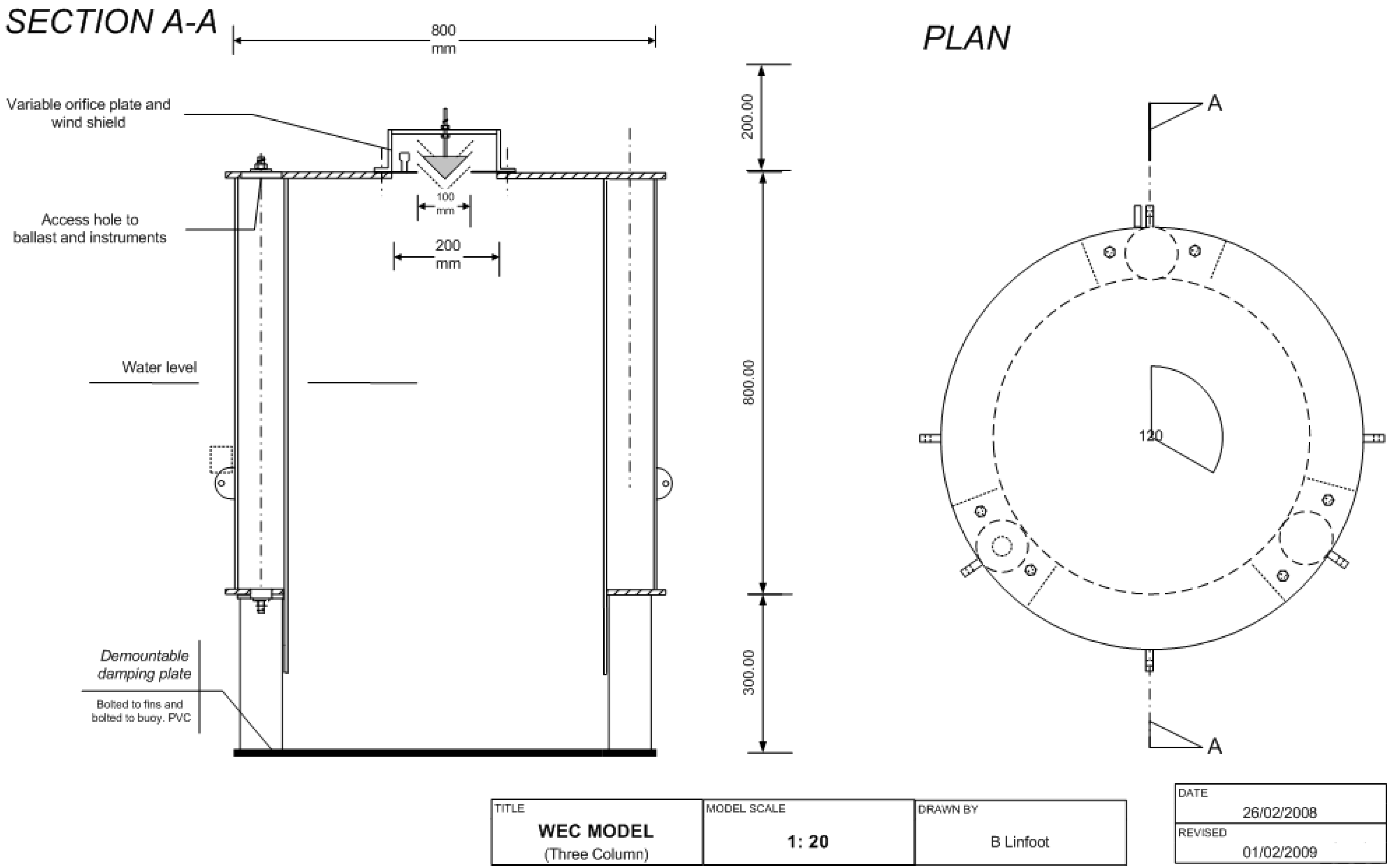
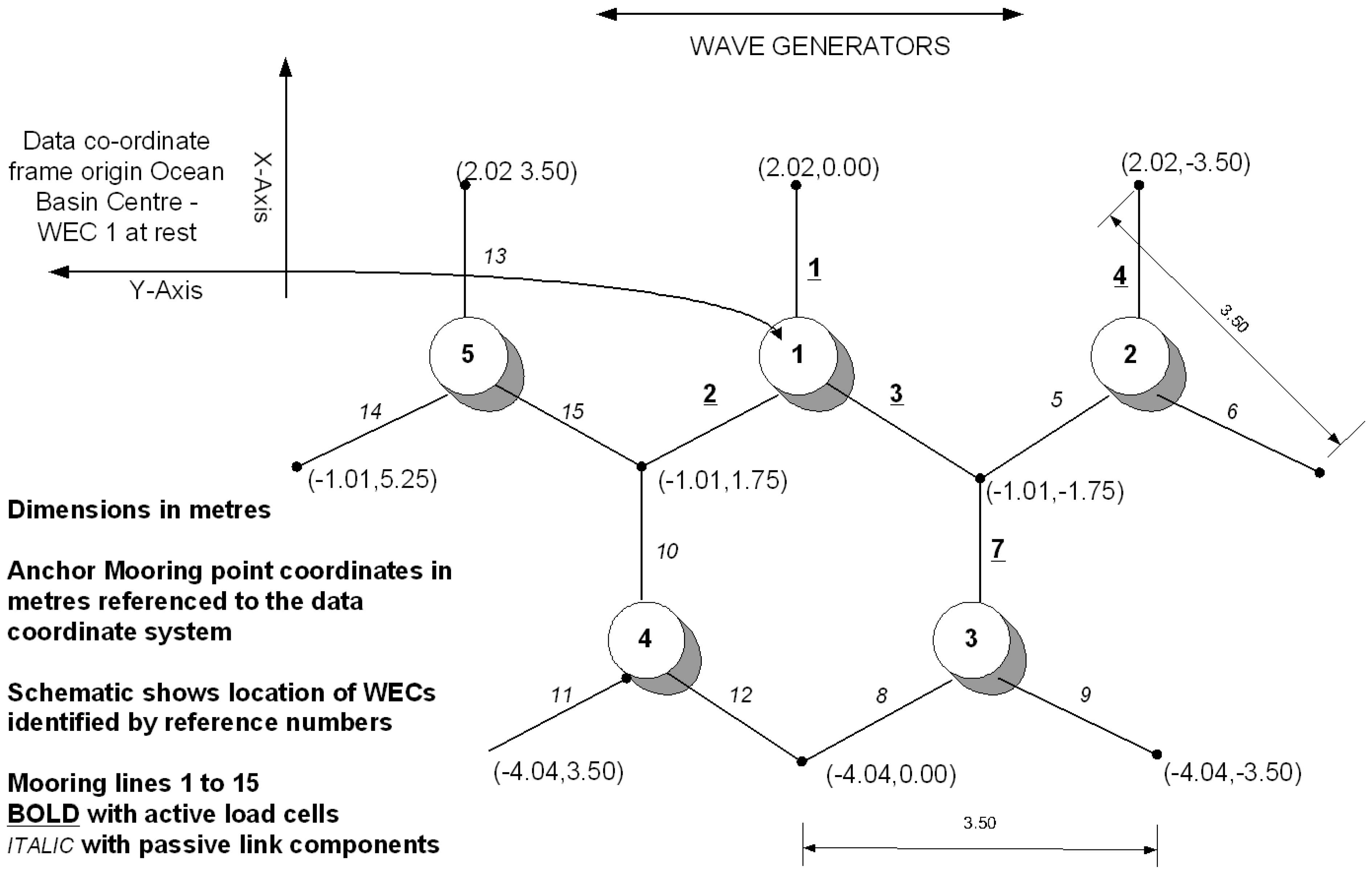
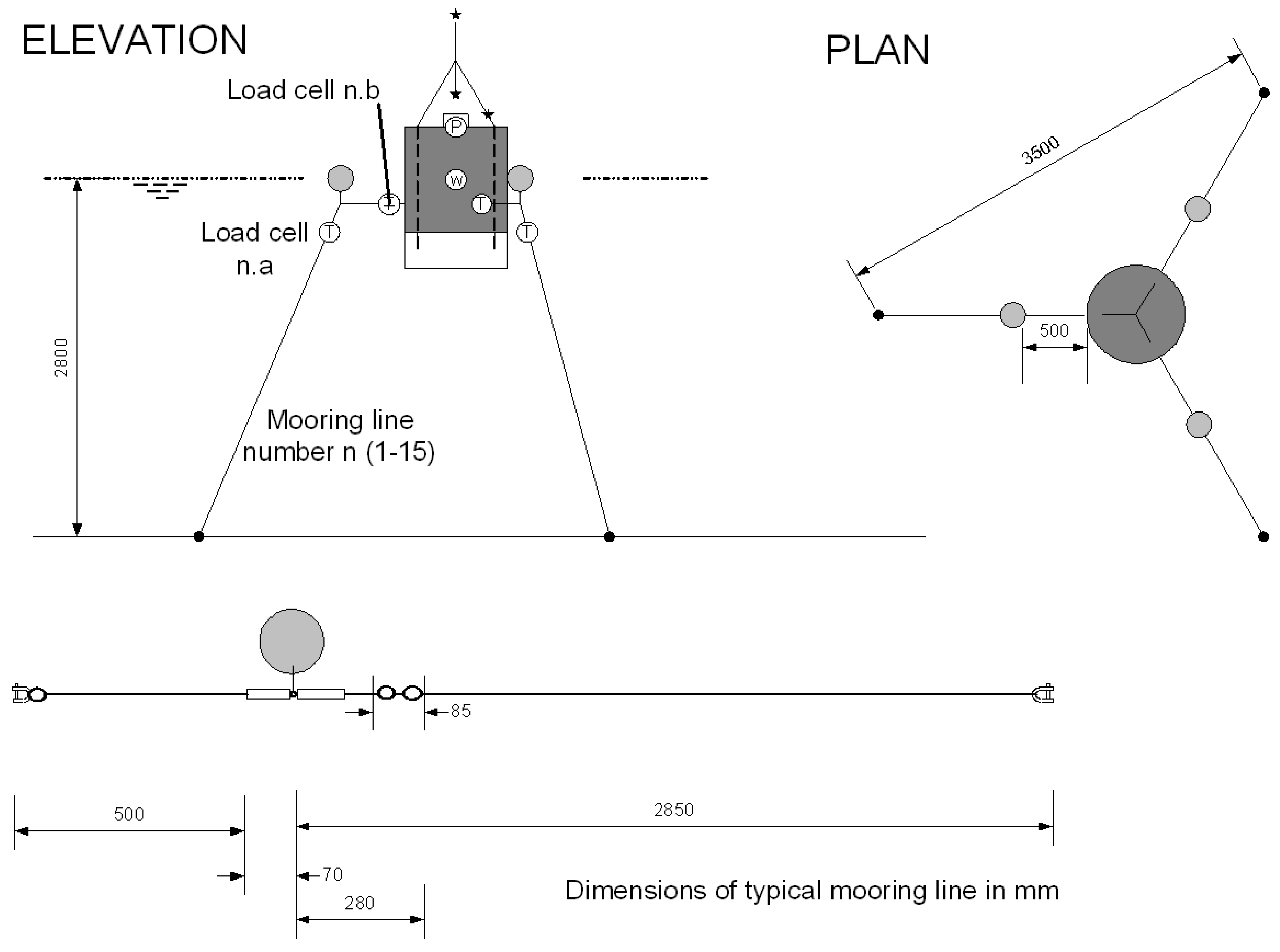
2.3. Overview of the Experiments and Instrumentation
- -
- Basin calibration
- -
- Tests on WEC 1 in regular and irregular waves and current
- -
- Tests on WECs 12345 in regular and irregular waves and current
- -
- Tests on WECs 123 in regular and irregular waves and current
- -
- Tests on damping and mooring stiffness of WEC1
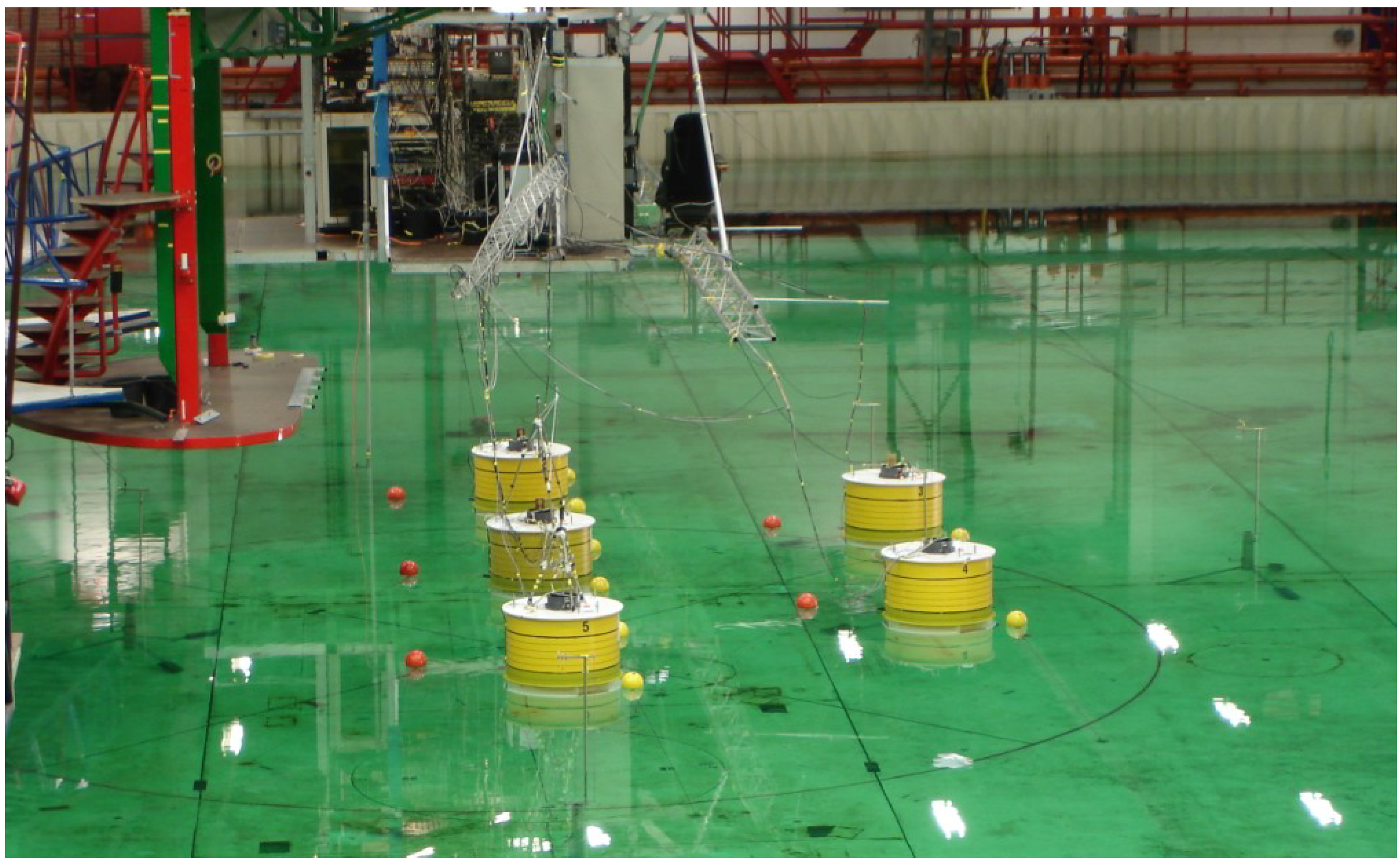
3. Results and Discussion

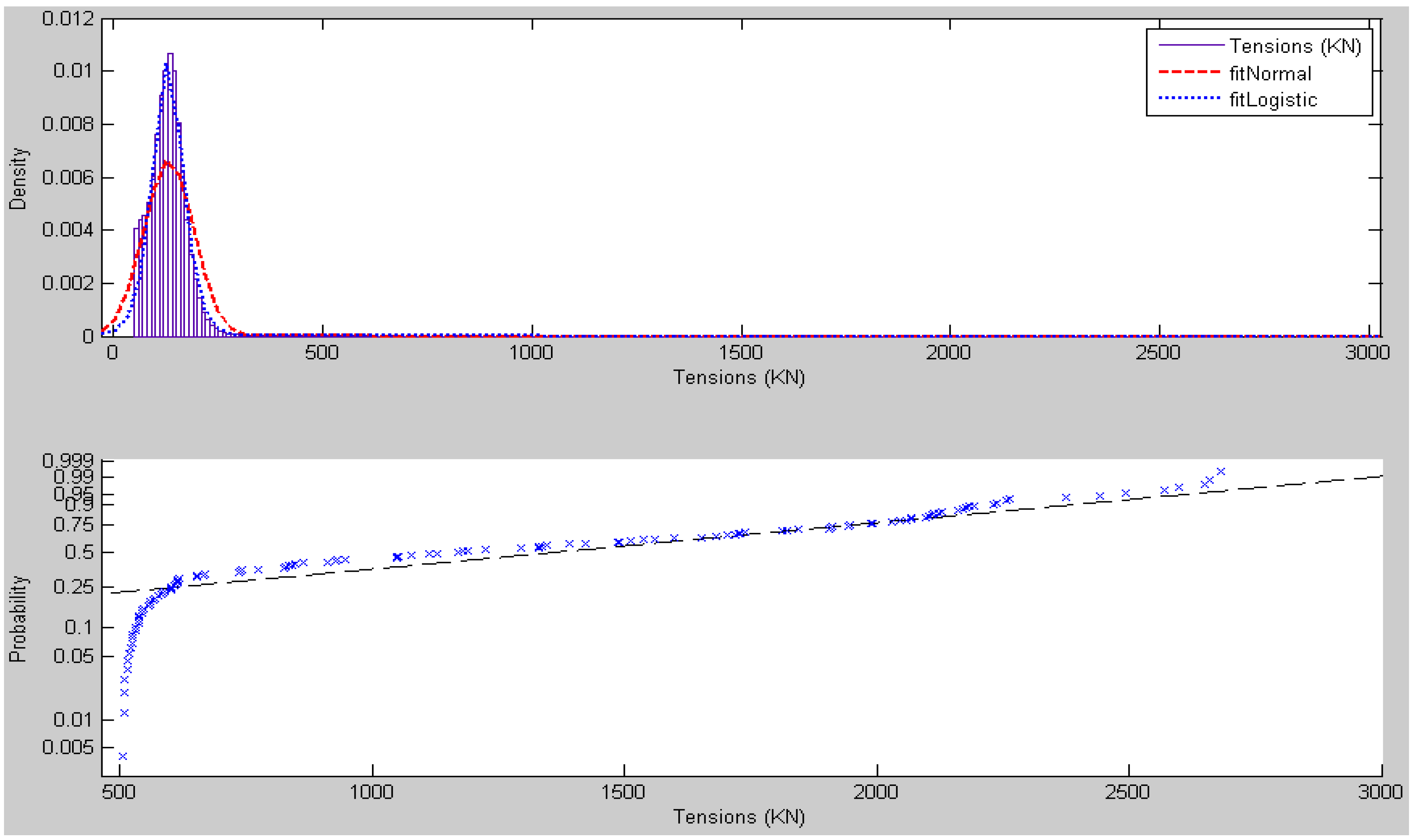
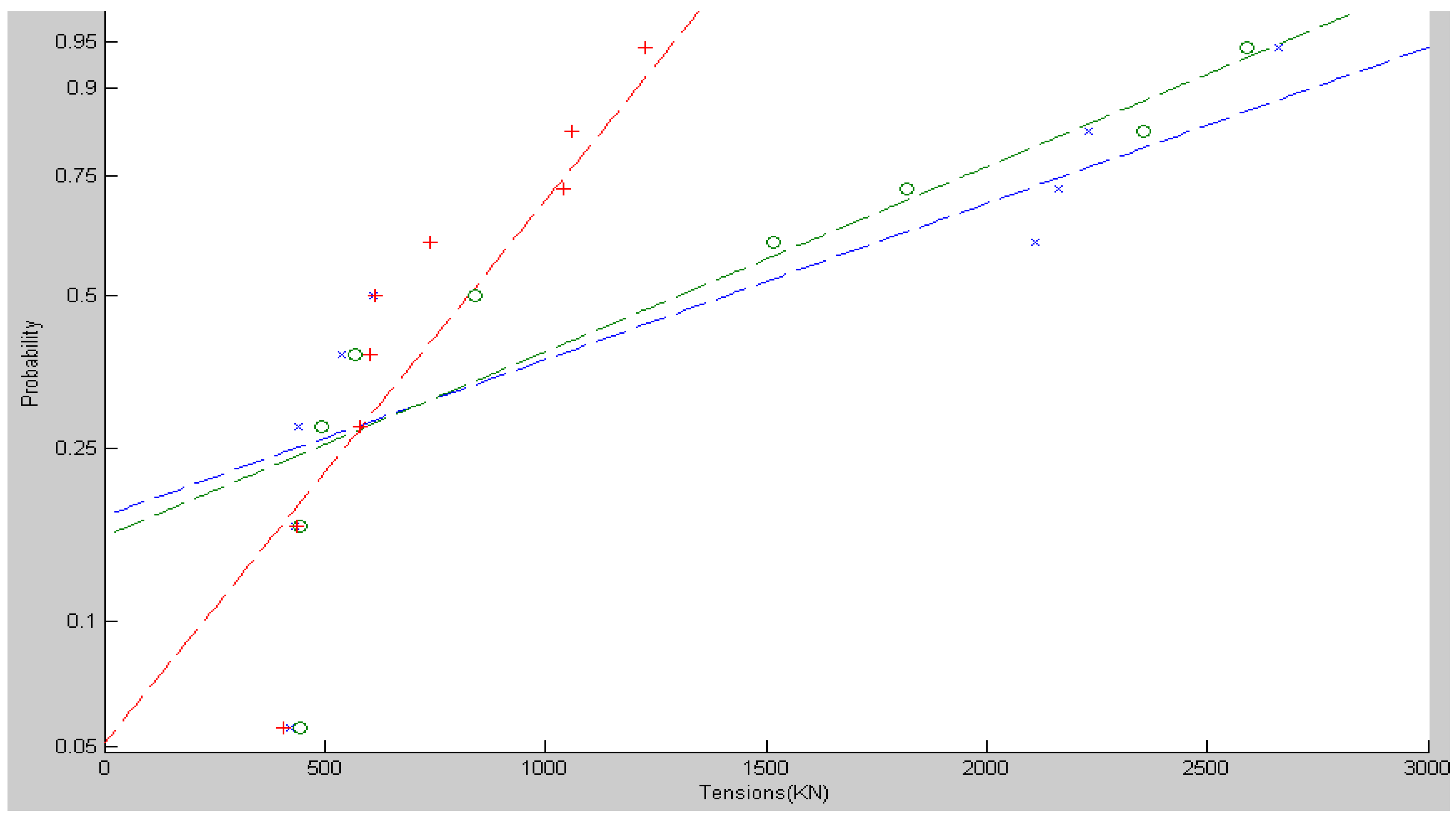
4. Conclusions
Acknowledgements
Author Contributions
Conflicts of Interest
References
- Kim, Y.C. Assessment of California’s ocean wave energy recovery. In California and the World Ocean ’97: Ocean Resources: An Agenda for the Future; Magoon, O.T., Converse, H., Baird, B., Miller-Henson, M., Eds.; American Society of Civil Engineers: Reston, VA, USA, 1998; pp. 175–182. [Google Scholar]
- Fitzgerald, J.; Bergdahl, L. Including moorings in the assessment of a generic offshore wave energy converter: A frequency domain approach. Mar. Struct. 2008, 21, 23–46. [Google Scholar] [CrossRef]
- Johanning, L.; Smith, G.H.; Wolfram, J. Measurements of static and dynamic mooring line damping and their importance for floating WEC devices. Ocean Eng. 2007, 34, 1918–1934. [Google Scholar] [CrossRef]
- Johanning, L.; Smith, G.H.; Wolfram, J. Interaction between Mooring Line Damping and Response Frequency as a Result of Stiffness Alteration in Surge. In Proceedings of the 25th International Conference on Offshore Mechanics and Arctic Engineering, Hamburg, Germany, 4–9 June 2006; pp. 403–412.
- Johanning, L.; Smith, G.H.; Bullen, C. Large Scale Mooring Line Experiments and Comparison with a Fully Dynamic Simulation Program with IMPORTANCe to WEC Installation. In Proceedings of the Seventeenth (2007) International Offshore and Polar Engineering Conference, Lisbon, Portugal, 1–6 July 2007; pp. 455–462.
- Grant, R.; Holboke, M. Shallow Water Effects on Low-Frequency Wave Excitation of Moored Ships. In Proceedings of Offshore Technology Conference, Houston, TX, USA, 3–6 May 2004.
- Folley, M.; Whittaker, T.J.T. The effect of sub-optimal control and the spectral wave climate on the performance of wave energy converter arrays. Appl. Ocean Res. 2009, 31, 260–266. [Google Scholar] [CrossRef]
- Ashton, I.; Johanning, L.; Linfoot, B. Measurement of the Effect of Power Absorption in the Lee of a Wave Energy Converter. In Proceedings of the 28th International Conference on Ocean, Offshore and Arctic Engineering, Honolulu, HI, USA, 31 May–5 June 2009.
- Vickers, A.; Johanning, L. Comparison of Damping Properties for Three Different Mooring Arrangements. In Proceedings of the 8th European Wave and Tidal Energy Conference, Uppsala, Sweden, 7–10 September 2009.
- Krivtsov, V.; Linfoot, B.T.; Harris, R.E. Investigation of the effects of mooring line surface buoys on the extreme mooring loads of wave energy converters. In Proceedings of the 4th International Conference on Marine Research for Environmental Sustainability, ENSUS2011, Newcastle, UK, 12–14 September 2011.
- Krivtsov, V.; Bryden, I.; Linfoot, B.T.; Wallace, R. Measurements of WEC Motions and Mooring Loads. In Proceedings of the 4th International Conference on Ocean Energy, Dublin, Ireland, 17–19 October 2012.
- Krivtsov, V.; Linfoot, B.T. Modelling of Disruption to Benthic Habitats and Overall Ecosystem Functioning by Marine Renewable Energy Installations. In Proceedings of the 16th European Conference on Eye Movements, Marseille, France, 20–24 August 2011; pp. 121–124.
- Krivtsov, V.; Howarth, M.J.; Jones, S.E. Characterising observed patterns of suspended particulate matter and relationships with oceanographic and meteorological variables: Studies in Liverpool Bay. Environ. Model. Softw. 2009, 24, 677–685. [Google Scholar] [CrossRef]
- Krivtsov, V.; Howarth, M.J.; Jones, S.E.; Souza, A.J.; Jago, C.F. Monitoring and modelling of the Irish Sea and Liverpool Bay: An overview and an SPM case study. Ecol. Model. 2008, 212, 37–52. [Google Scholar] [CrossRef]
- Krivtsov, V.; Mikkelsen, O.; Jones, S. Entropy analysis of SPM patterns: case study of Liverpool Bay. Geo-Mar. Lett. 2012, 32, 195–204. [Google Scholar] [CrossRef]
- Krivtsov, V.; Mikkelsen, O.A. Regression Tree Analysis of SPM Entropy Groups: Case Study from the Irish Sea. Univers. J. Geosci. 2014, 2, 109–115. [Google Scholar]
- Krivtsov, V.; Bryden, I.; Linfoot, B.T.; Wallace, R. Sea trials of a wave energy converter in Strangford Lough, Northern Ireland. J. Shipp. Ocean Eng. 2013, 3, 11–20. [Google Scholar]
© 2014 by the authors; licensee MDPI, Basel, Switzerland. This article is an open access article distributed under the terms and conditions of the Creative Commons Attribution license (http://creativecommons.org/licenses/by/3.0/).
Share and Cite
Krivtsov, V.; Linfoot, B. Basin Testing of Wave Energy Converters in Trondheim: Investigation of Mooring Loads and Implications for Wider Research. J. Mar. Sci. Eng. 2014, 2, 326-335. https://doi.org/10.3390/jmse2020326
Krivtsov V, Linfoot B. Basin Testing of Wave Energy Converters in Trondheim: Investigation of Mooring Loads and Implications for Wider Research. Journal of Marine Science and Engineering. 2014; 2(2):326-335. https://doi.org/10.3390/jmse2020326
Chicago/Turabian StyleKrivtsov, Vladimir, and Brian Linfoot. 2014. "Basin Testing of Wave Energy Converters in Trondheim: Investigation of Mooring Loads and Implications for Wider Research" Journal of Marine Science and Engineering 2, no. 2: 326-335. https://doi.org/10.3390/jmse2020326



